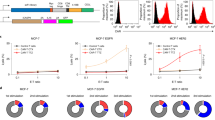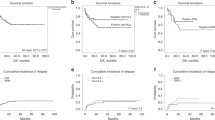Abstract
IN previous reports1, we have described the isolation from splenic and lymph node cells of homograft antigens which required immediate bioassay, because they lost antigenic activity rapidly on standing and were almost totally inactivated by simple freezing or by freeze-drying. These early preparations, however, afforded materials which enabled us to develop an assay procedure and to examine some of the properties of antigenic fractions. In the course of these examinations, newer methods of antigen preparation were devised, based on the isolation of subcellular fractions from sucrose solutions. Brent et al.2, Manson et al.3 and Davies4 have recently reported the preparation of transplant antigens from sources and by methods that diifer from those described below.
This is a preview of subscription content, access via your institution
Access options
Subscribe to this journal
Receive 51 print issues and online access
$199.00 per year
only $3.90 per issue
Buy this article
- Purchase on Springer Link
- Instant access to full article PDF
Prices may be subject to local taxes which are calculated during checkout
Similar content being viewed by others
References
Mann, L. T., jun., Corson, J. M., and Dammin, G. J., Nature, 187, 774 (1960); 193, 168 (1962).
Brent, L., Medawar, P. B., and Ruszkiewicz, M., in Transplantation, Ciba Found. Symp., 6 (1962).
Manson, L. A., Foschi, G. V., and Palm, J., Proc. U.S. Nat. Acad. Sci., 48, 1816 (1962); J. Cell and Comp. Physiol., 61, 109 (1963).
Davies, D. A. L., Biochem. J., 84, 307 (1962); in Transplantation, Ciba Found. Symp., 45 (1962).
Mann, L. T., jun., Corson, J. M., and Dammin, G. J., Science, 130, 1707 (1959).
Keck, K., Arch. Biochem. Biophys., 63, 446 (1956).
Hutchinson, W. C., and Munroe, H. N., Analyst, 86, 768 (1961).
Allfrey, V. G., Mirsky, A. E., and Osawa, S., J. Gen. Physiol., 40, 451 (1957).
Martin, E. M., Malec, J., Coote, J. L., and Work, T. S., Biochem. J., 80, 606 (1961).
Author information
Authors and Affiliations
Rights and permissions
About this article
Cite this article
MANN, L., CORSON, J. & DAMMIN, G. Homograft Antigens: Isolation of Fractions of Normal Cells which retain Activity after Freeze-drying. Nature 199, 499–501 (1963). https://doi.org/10.1038/199499a0
Issue Date:
DOI: https://doi.org/10.1038/199499a0
Comments
By submitting a comment you agree to abide by our Terms and Community Guidelines. If you find something abusive or that does not comply with our terms or guidelines please flag it as inappropriate.



